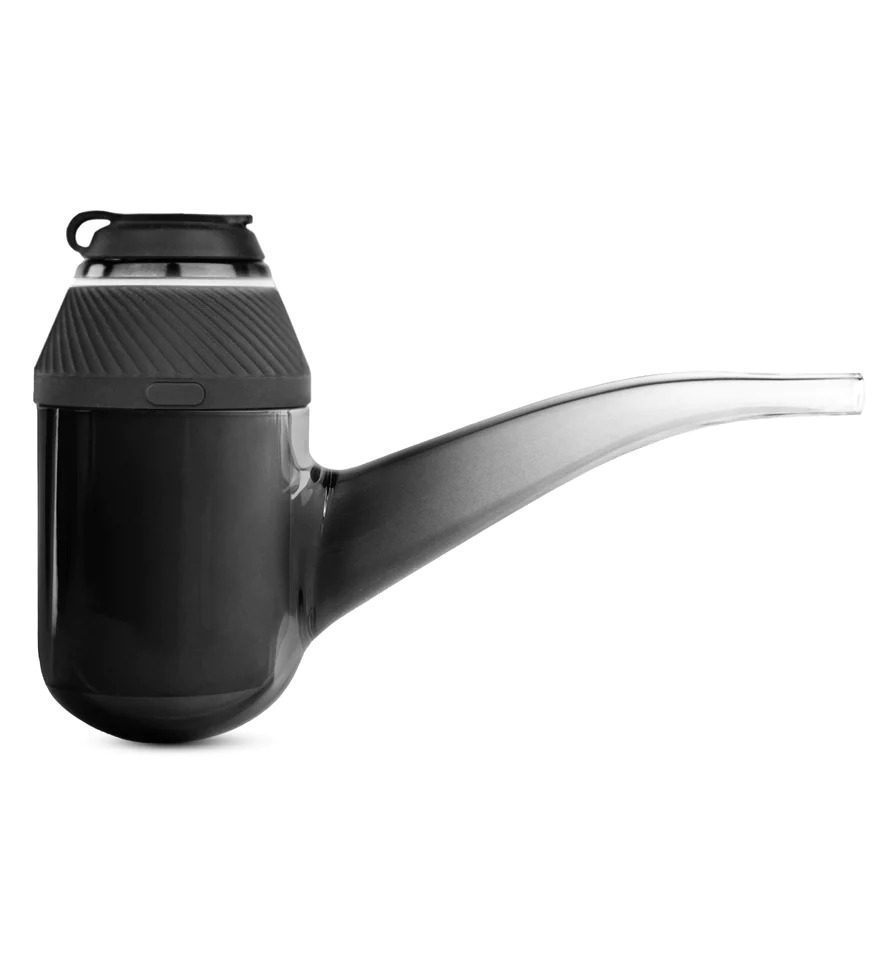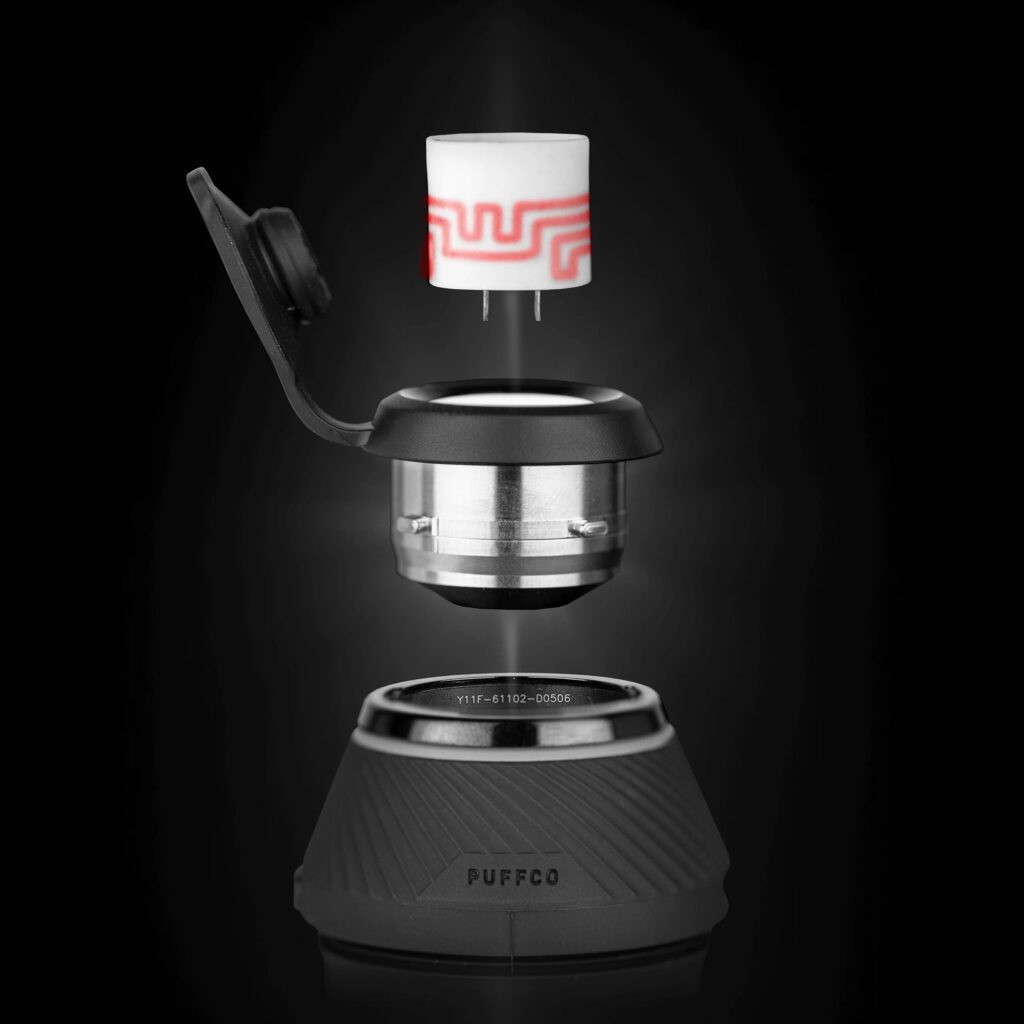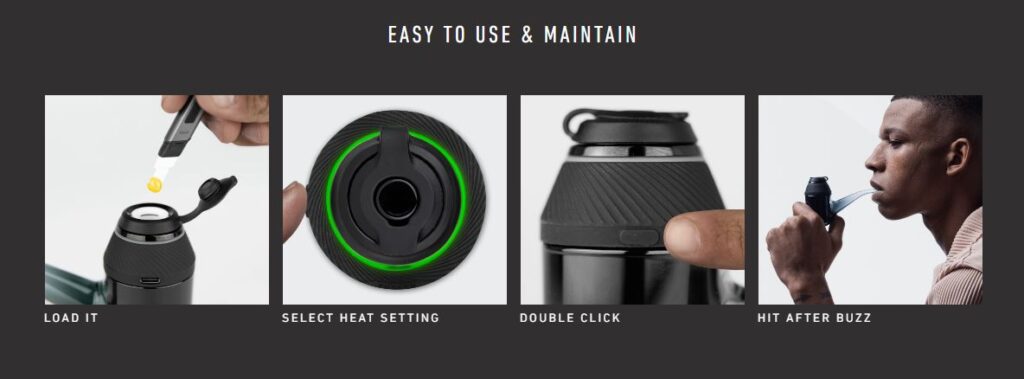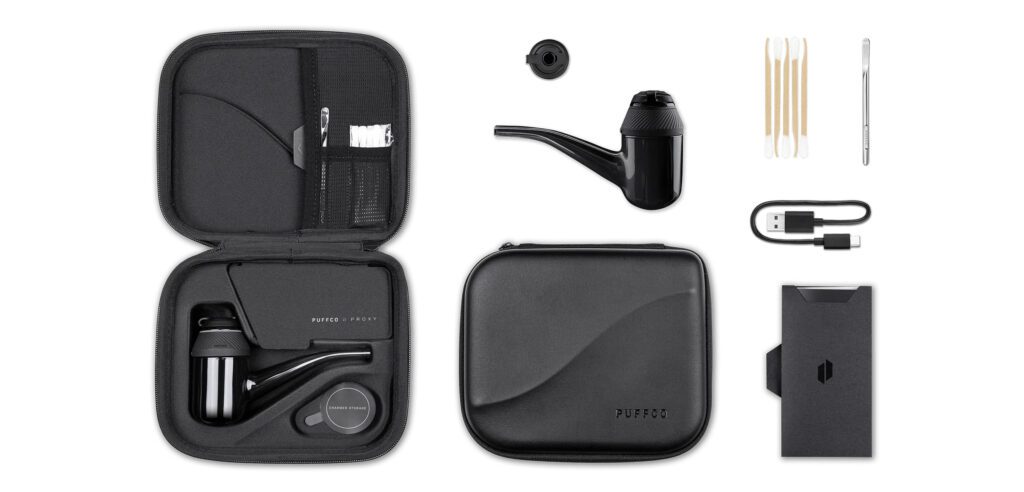Puffco has put genuine efforts into improving the form and functions of heating elements since the release of Peak in 2018. After a while, It released an updated device Peak Pro with a more reliable and precise heater. However, in 2022, Puffco released the Proxy with shrunk heating element resulting in a more refined vaporizing system.
To start with, the Proxy takes away most of the crucial tech from the Peak Pro. For example, it includes the heat from the side wall instead of the floor to prevent boiling off the wax before drawing and make it small enough to fit into the palm. Also, the main idea behind the Proxy came from the fact that Peak users use their device dry to enjoy vaping better.

Puffco Proxy Design
The Proxy stands tall at five inches and fits into the hand. Also, it is under 4 inches from the base to the carb cap, which is not much bigger than conventional tobacco pipes.
The Proxy has three modular parts; the glass pipe section, a base unit, and the replaceable chamber inside the base unit. To use the device, twist the chamber to fit into the base, then slide it into the pipe body.

Cutting-Edge 3D Heating Technology
The Proxy innovates with 3D heating technology, first introduced with the Peak Pro device. The 3D chamber has ceramic walls that produce heating on all sides for a better experience and superior flavor. It also comes with an Oculus carb cap that ensures a directional air path ensuring maximum vapor production.

An Innovative Modular Design of Puffco Proxy
The latest Puffco Proxy has a modular design that makes it customizable. The Proxy offers the flexibility of using third-party glass by allowing separation from the heating unit. Also, it can connect to any glass compatible with the size. The device is also compatible with dry herbs using a flower bowl, which is sold separately. Additionally, it is compatible with water filtration that cools down the vapors.
Communication through LED Light
The Proxy has four temperature settings reflected through LED lights: blue, green, red, and white. Like Peak, the Proxy communicates with the colored pattern through LED lights. The slow pulse of LED indicates heating up; three red flashes mean the battery is drained. One solid red means the unit is too hot and won’t respond until it’s cool off enough. Also, triple-clicking gives the user an estimate of the remaining battery life. However, it doesn’t have a smartphone app, so the user will always have to worry about updating the device.
Using Puffco Proxy
The Proxy is dead simple to use. All you need to do is charge the unit using a USB-C cable and spoon a wax into the chamber. Now, hold the button for three seconds to turn on the device. Next, move on to a single tap on the button to select between the temperature settings (blue, green, red, and white). Finally, double-click it to start heating. The device will vibrate and flashlight in 30 seconds.
Like Peak and Peak Pro, the Proxy vibrates when it reaches the desired temperature in 30 seconds. It will stay hot for four drags before it automatically shuts off the heat. Also, the user can extend the session by double-tapping the button. However, it is recommended not to heat the device more than four times.

Ecosystem of Accessories
The Proxy ecosystem of accessories will be coming out over the next few months and will allow a customizable experience for Puffco lovers. The official carrying case also comes with a USB-C cable compartment, a concentrate jar slot, and an additional chamber storage area.

Final Words
Puffco has experienced rapid growth between 2016 and 2021, doubling its revenue yearly. However, the chip shortage affected the growth. The Proxy was supposed to be released in 2021, but it was pushed back for the company to acquire inventory to launch the product. So now, since the Proxy has finally hit the market, it is believed to become a vape enthusiast favorite with its modular design, small size, and 3D heating technology. So, let’s wait a while and see what people say about this one!
Want to learn more about Puffco’s latest product, The New Peak Pro? Click here to read our blog post about it.

